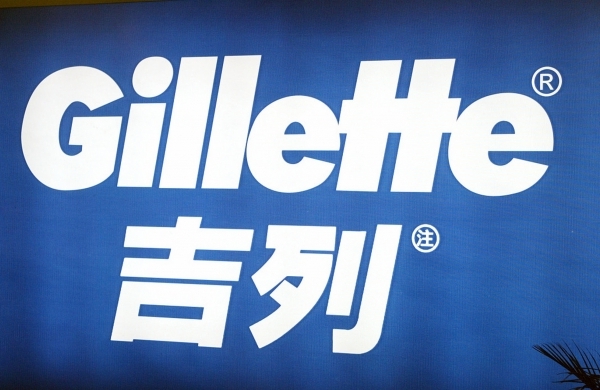Did not receive verification mail? Please confirm whether the mailbox is correct or not Re send mail

IPR Daily
- 2022-12-20 18:21:18
IPR and International Trade: Trademarks, Part 1
This post marks the launch of a multipart series designed to help right holders and importers better understand the opportunities and obligations that attach to intellectual property rights (IPR) in the international trade regulatory environment.
The first installment in this series is on trademarks. Our treatment of this topic is, on account of the diversity of issues it encompasses, split into two parts. The first part, presented below, sets the stage by addressing the infringement levels recognized by U.S. Customs and Border Protection (CBP) and their accompanying enforcement regimes. The second part will complete the trademark-trade picture by discussing enforcement relief options and presenting best practice tips for both right holders and importers.
Subsequent installments in the series will examine the protection and compliance strategies that correspond to copyrights and patents under U.S. trade law.
I. Introduction
Trademarks are defined in U.S. law as a word, name, symbol, device, color, or combination thereof used to identify and distinguish goods from those manufactured or sold by others and to indicate the origin and source of goods, even if said source is unknown. In U.S. practice, trademarks are established by using the trademark; registration is not required, but is available at both the federal and state levels through, respectively, the U.S. Patent and Trademark Office (USPTO) and the equivalent state level agencies. Federal trademark registrations correspond to a specific class (or specific classes) of goods and/or services and are renewable every 10 years. One need only think of trademarks like Apple, Microsoft, or Bluetooth to appreciate their centrality to a corporation’s identity, good will, and success.
Trademarks are one of the easiest forms of intellectual property rights (IPR) to create. There is no need, in relative terms, to develop a sophisticated patent or pen a magnum opus. They are, by the same token, one of the easiest forms of IPR to steal, infringe, counterfeit, fake, or otherwise knock off. This reality characterizes both domestic and foreign commerce.
The international trade dimension of the preceding observation is borne out in statistics maintained by the federal government’s interagency National Intellectual Property Rights Coordination Center. Fueled by the advent of new technologies and the labor arbitrage-/market access-driven offshoring dynamics of the past decades (and, more recently, the rise of de minimis scale e-commerce), the MSRP value of intellectual property rights (IPR) theft has, per U.S. Customs and Border Protection (CBP) enforcement data, risen from $1.2B in 2017 to $3.3B in 2021. This 175% gain – approximately 90% of which derives from high-volume, low-value international mail and express shipments – has been concentrated primarily in a small set of countries (China, Hong Kong, Turkey, Vietnam, Singapore, and South Korea) and a specific set of products (handbags, watches, apparel, jewelry, consumer electronics, sporting goods, and pharmaceuticals). This theft is problematic insofar as it undercuts public health and safety, jeopardizes consumer well-being, reduces economic prosperity, dilutes brand integrity and good will, disincentivizes innovation, and weakens national security. It should not, in light of the foregoing, come as any surprise that CBP has identified IPR protection and enforcement as a “Priority Trade Issue.”
II. Infringement Levels and Enforcement Actions
Using a combination of recordation tools, interagency risk assessment techniques, e-allegations, whistleblower reports, audits, public-private collaborative operations, and data analytics, CBP works to roll back the tide of IPR theft by targeting the following levels of trademark infringement:
A. Counterfeit
The first level of infringement recognized by CBP involves goods bearing counterfeit marks. A counterfeit mark is defined by 15 USC 1127 as a spurious mark which is identical with or substantially indistinguishable from a federally registered and recorded trademark. These are never considered genuine due to the fact that violative marks are attached to merchandise without the consent of the legitimate right holder. An example in this regard would involve the use of the words “Ray-Ban” in connection with a line of optical products, without the authorization of the Ray-Ban trademark owner (Luxottica Group S.p.A.)
Merchandise which CBP has a “reasonable suspicion” of bearing a counterfeit mark will be detained (or, if already released, made the subject of a redelivery order). During the detention period, an importer will have the opportunity to request images of the allegedly infringing mark and present information establishing that it is not counterfeit. The trademark owner will simultaneously receive information (including, under specified circumstances, samples) concerning the merchandise or, if applicable, its retail packaging. The engagement of an attorney at this juncture is crucial given the short period of time CBP officials have under the regulations for making determinations. Should an importer fail to either respond to CBP’s Notice of Detention or furnish information that is sufficient to establish the non-counterfeit nature of the mark, CBP will disclose the information set forth in 19 CFR 133.21(d) to the right holder.
Merchandise bearing counterfeits of a federally registered trademark that has been recorded with CBP will, concomitant with the foregoing, be seized and, absent a right holder’s timely written consent (i.e., authorizing the importation or, as the case may be, exportation), forfeited. Following forfeiture, CBP can either destroy the violative goods or, assuming certain circumstances are met (including, for example, the obliteration of the counterfeit mark), use, donate, or sell the forfeited goods.
Merchandise bearing counterfeits of a federally registered trademark that has not been recorded with CBP will, on the other hand, receive a diminished level of protection. Under this specific circumstance, CBP can, where “administratively feasible and appropriate,” seize the merchandise in accordance with the laws that prohibit the intentional trafficking of counterfeit goods and services.
In the event that merchandise bearing counterfeit marks is seized and forfeited (following the perfection of the forfeiture), CBP can, under either of the aforementioned circumstances, issue a civil penalty. Determinations regarding the amount of a penalty are tied to an importer’s prior violation history, the value of the merchandise (as if it had been genuine, based on the MSRP value of genuine merchandise at the time of the seizure), and the discretion of the fines, penalties, and forfeitures officer (who has leeway to deviate from the published guidelines that inform such analyses, as discussed in greater detail, below).
B. Confusingly Similar
The second level of infringement recognized by CBP entails goods bearing confusingly similar trademarks or trade names. This level can involve special cases, for example, those involving replicas, models, toys, etc. A confusingly similar mark or trade name is so similar to a genuine, recorded mark or trade name that it is likely to cause confusion in the public mind as to the source of ownership. This kind/level of infringement is also referred to as “copying” or “simulating.” The use of the words “Ray Bane” or “Ray Van” on sunglasses might, as an example in this connection, be deemed to be confusingly similar to the genuine trademark Ray-Ban.
Merchandise suspected of bearing a mark that copies or simulates a recorded mark or trade name will be detained (or, if already released, made the subject of a redelivery order). The issuance of a detention notice opens a 30-day period of time during which an importer can request images of the allegedly simulating mark, remove/obliterate the objectionable mark as a precondition to release, or otherwise satisfy one of the circumstances set forth at 19 CFR 133.22(c). It also triggers an obligation on the part of CBP to disclose the information specified at 19 CFR 133.25 to the right holder. Importers who satisfy one of the circumstances laid out in 19 CFR 133.22(c) will have their merchandise released. Those who do not, on the other hand, will have their merchandise seized and possibly forfeited. The seizure of merchandise bearing a confusingly similar mark or trade name does not, contrary to the case with counterfeit marks, obligate CBP to disclose additional information to a right holder.
Last, and in what constitutes a further contrast with CBP practice involving counterfeit marks, merchandise bearing a confusingly similar mark or trade name that is registered with the USPTO but not recorded with CBP is subject to neither detention nor seizure. The differential enforcement treatment accorded recorded and unrecorded marks underscores the importance of recording marks with CBP.
C. Grey Market Goods
The third and final level of trademark infringement recognized by CBP focuses on what are referred to as “grey market” articles, “parallel imports,” or “diverted goods.” This kind of infringement involves foreign manufactured goods bearing a genuine trademark or trade name identical with or substantially indistinguishable from one owned and recorded by a U.S. citizen or corporation that is imported without the authorization of the right holder. Grey market goods are, in other words, genuine products bearing a mark of trade name that has been applied with the approval of the right owner for use in a country other than the United States.
An example of a grey market goods scenario, taken from one of the seminal cases on the subject, consists of Perugina chocolates made in Venezuela. These chocolates were made under license from Société des Produits Nestlé, S.A. (Nestlé S.P.N.), rightful owner of the Perugina trademark in the United States. However, the importation of these Venezuelan-made chocolates into the United States was not authorized by Nestlé S.P.N, which preferred to sell Italian-made products in the U.S market. As a U.S. appeal court put it, this turned “an otherwise ‘genuine’ product into a ‘counterfeit’ one.”
Trademarks and trade names that have been recorded with CBP will be accorded grey market protection provided (i) the U.S. and foreign intellectual property rights are not owned by the same person/entity and (ii) the U.S. and foreign right holders are neither a parent or subsidiary of one another nor subject to common ownership/control. An exception to the second element (i.e., no parent/subsidiary relationship or common ownership/control) may, via the Lever-rule, apply to genuine goods produced by a related foreign entity that are, absent notice to the consumer, physically and materially different from those authorized for importation into and commercialization within the U.S. All claims for Lever-rule protection must be particularly described and supported by competent evidence.
Imported merchandise bearing trademarks and trade names which are, by virtue of their prior recordation with CBP, entitled to grey market protection will, absent the establishment of an exemption under 19 CFR 133.23(e), be detained (or ordered redelivered, if already released) and made subject to potential seizure and forfeiture. In contrast to the foregoing, unrecorded trademarks and trade names are not entitled to grey market protection.
In our next installment of this series, we will be looking at possible avenues for enforcement relief, and providing best practice tips for managing trademarks in the context of international trade.
Author
Robert Kossick
Attorney

Robert is a Board Certified International Attorney, Licensed Customs Broker, and Certified Export Specialist whose practice focuses on the planning, compliance, enforcement, and security dimensions of U.S. import and export transactions. With over twenty years of professional experience, Robert brings seasoned, specialized, and multicultural know-how and perspective to the analysis and resolution of customs and trade issues.
Fred Rocafort
Attorney

Fred leads Harris Bricken’s intellectual property practice and is the coordinator of the firm’s international team. Much of Fred’s practice consists of helping cannabis businesses protect their brands. He also works with entrepreneurs and companies entering the Web3 space, a new frontier for IP law. Prior to joining Harris Bricken, Fred worked overseas for more than a decade, in both government and private sector roles. Fred is a regular contributor to the award-winning China Law Blog and Canna Law Blog. Fred began his career overseas as a U.S. consular officer in Guangzhou, China, where he advocated for fairer treatment of American companies and citizens in China and for stronger intellectual property rights enforcement. After entering the private sector, Fred worked at a Shanghai law firm as a foreign legal advisor and later joined one of the oldest American law firms in China, helping foreign companies navigate the Chinese legal environment. He also led the legal team at a Hong Kong-based brand protection consultancy, spending most of his time out in the field, protecting clients against counterfeiters and fraudsters in Greater China, Southeast Asia and Latin America. In addition to his IP work, as a native Spanish speaker, Fred works closely with different Harris Bricken teams on Latin America and Spain matters. Fred also provides advice to cannabis industry participants and other businesses on import and export transactions. Fred is an ardent supporter of FC Barcelona—and would be even in the absence of Catalan forebears who immigrated to Puerto Rico in the mid-1800s.
Source: harrisbricken.com-Robert Kossick & Fred Rocafort
Editor: IPR Daily-Ann
- I also said the two sentence
- Also you can enter 140words
 Chang Tsi Secures Victory for Gillette in Trade Dress Protection Lawsuit
Chang Tsi Secures Victory for Gillette in Trade Dress Protection Lawsuit Government Signals Potential Shift Toward Preliminary Injunctions in Patent Infringement Cases
Government Signals Potential Shift Toward Preliminary Injunctions in Patent Infringement Cases District Court Issues AI Fair Use Decision: Using Copyrighted Works To Train AI Models Is Fair Use, but Using “Pirated” Copies To Build a Central Library Is Not
District Court Issues AI Fair Use Decision: Using Copyrighted Works To Train AI Models Is Fair Use, but Using “Pirated” Copies To Build a Central Library Is Not Patent Case Summaries | Week Ending June 13, 2025
Patent Case Summaries | Week Ending June 13, 2025


